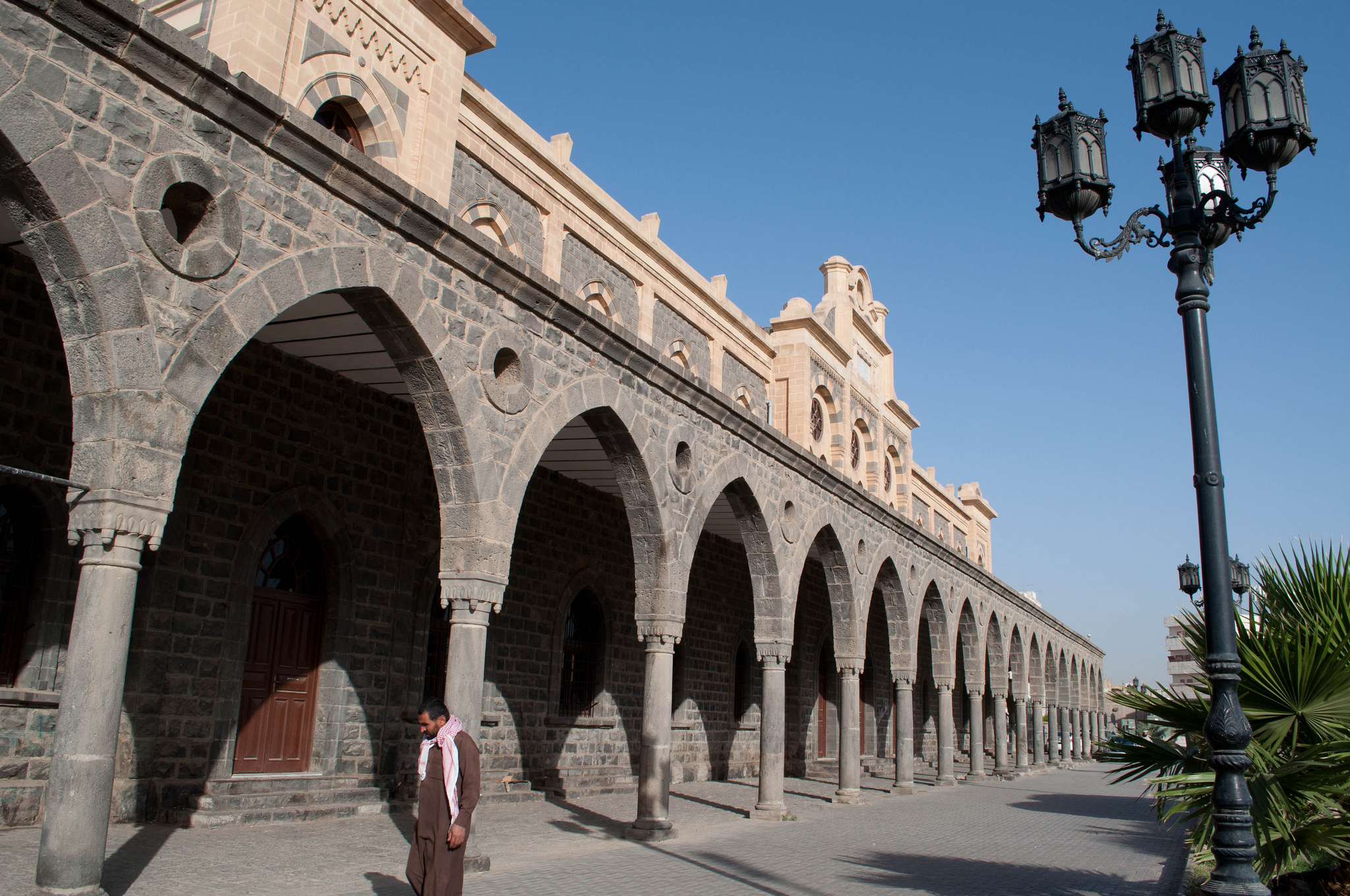Recapturing railway history a slow effort in Saudi Arabia
Photo: Hejaz Railway station in Medina / Osama Saeed Bhutta / CC BY-NC 2.0
Saudi Arabia is slowly transforming its historic Hejaz Railway stations, some of the country's most important and underappreciated early-20th century cultural and heritage landmarks, from a hopeless cause into multimedia museums.
The projects, launched in 2005 by the Commission for Tourism and National Heritage, fall short of fully restoring locomotives and carriages that operated from 1900 to 1924 during the reign of the Ottoman Empire, but features them in exhibits in the Medina and Tabuk regions.
The Medina and Mada’in Saleh railway station museums are complete and open to the public while the Tabuk station remains under construction. Tabuk’s facility is scheduled for completion in September 2016.
The government's awakening to the value of the railway and its stations as cultural heritage sites has been a long journey. Even the railway's significance to transport hajj and umrah pilgrims from Damascus to Medina has only recently been recognized.
"Everything we know that we call the Hejaz is in fact a fusion of the Ottoman culture and the Arab culture and the railway is a small part of that," said Atef Alshehri, a Saudi architect who specializes in preserving heritage sites. "Cultural awareness, our awareness in our roots, is still in its infancy in Saudi Arabia."
The Medina museum opened to the public in 2014. It features a German-made Hartmann locomotive and several railcars. The refurbished station, with its Ottoman-inspired architecture remodeled as a museum, offers tourists a history of Medina, especially during the time of Prophet Mohammed (pbuh).
The Tabuk station has a state-of-the-art museum separate from a much smaller station with one locomotive and two railcars featured as exhibits.
The Mada'in Saleh station and workshop "represents the site's central tourism activities area by providing the basic services, such as reception, tourism information and guiding services and museum displays,” according to the tourism commission.

Photo: SAUDI ARABIA: Abandoned railway station of Hejaz Railway from Damascus to Saudi Arabia / Amelie Koch
RAIL AGAINST TIME
The fact the commission achieved as much as it did in rescuing artifacts is a testament to its recognition that if it didn't act quickly, the railway’s history would be erased forever.
As late as the 1980s, most of the old rail system, starting at the Jordan-Saudi border, was intact. Steam locomotives and carriages remained on the tracks as if frozen in time. But entrepreneurs began upending the trains to take the tracks to sell for scrap, and then the overturned locomotives were cannibalized as well.
Back in 1924, when the last long cargo train pulled out of the Medina for Jordan, locomotive engineers dismantled one carriage after another during the journey for wood to feed the steam engine.
Gerhard Henrich, a Hejaz Railway historian in Riyadh, says evidence of the railroad is scattered throughout the Medina region.
"When I last visited the area, there were stripped cars overturned along the line, and I found steel rails stamped with the manufacturer's name used to construct roofs for buildings," Henrich said.
Henrich says the stations are made of stone, so the shells remained intact. But windows, doors and fixtures disappeared.
When rare Ottoman coins were discovered under one station, treasure hunters scoured all the stations along the route, causing further damage.
About 15 years ago, the government fenced in all stations and crossings along the route to prevent further vandalism but did little to preserve the remnants, according to Heinrich.

Photo: Paul Garnier clock at the Hejaz Railway station / Verity Cridland / CC BY 2.0
CULTURAL AND HERITAGE LANDMARK
However, the commission felt confident enough about its preservation project to submit an application in April 2015 to list the railway as a UNESCO World Heritage site.
Alshehri said the value of the Hejaz Railway as a cultural landmark cannot be underestimated. He noted that Medina's population doubled to 60,000 between 1900 and 1910 because the railway made the city easily accessible for the first time.
In addition, a major purpose of the railroad was to transport pilgrims to Mecca and Medina. Although the railway never extended beyond Medina, the intention was to deliver pilgrims to Mecca as well.
"The railway was planned among the historic pilgrim route from Damascus, which had been a route since the beginning of Islam," Alshehri said.
Alshehri is enthusiastic about the commission's efforts to create museums from the stations, but he said he'd prefer the government also consider fully restoring at least one locomotive to become operational and rebuild a portion of the line.
"The government has done a good job with the Medina station, especially making alterations from a station into the museum," he said. "But train memories are not the buildings. There is no attempt to revitalize the trains to travel a short distance, to give the actual experience of travelling by steam. There is nothing to show how they actually operated."
Just a decade ago it was considered improbable that the Hejaz Railway would be saved at all. And the work has only just begun.
“It's a big, big job in a big, big country," Henrich said. "They have a lot of work to do."
© SalaamGateway.com 2016

Rob L. Wagner